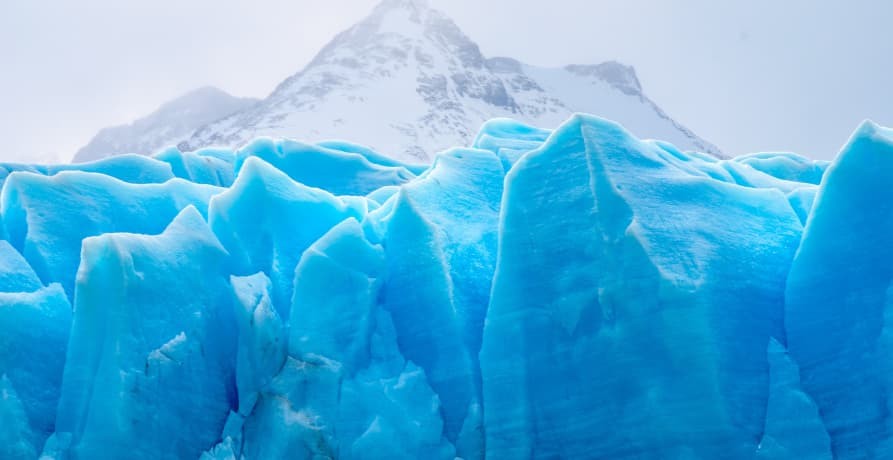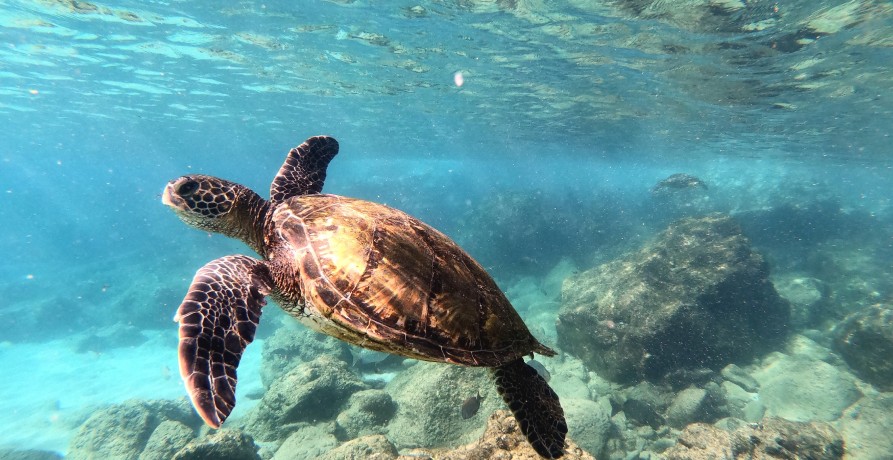Tourism, a vital economic engine, can inadvertently harm the very environments it thrives on. At SIXT.VN, we understand this delicate balance and strive to promote responsible travel. So, how exactly does mass tourism impact Kenya’s environment, and what can be done about it? Let’s explore the environmental consequences of tourism in Kenya, offering insights and solutions for more sustainable tourism practices, ensuring preservation of its natural beauty and supporting environmental protection.
1. What Are The Primary Environmental Impacts of Mass Tourism In Kenya?
Mass tourism in Kenya leads to significant environmental damage through habitat destruction, pollution, and resource depletion. According to a report by the United Nations Environment Programme (UNEP) in 2019, poorly managed tourism can degrade ecosystems, disrupt wildlife, and strain natural resources. These issues stem from increased infrastructure development, waste generation, and excessive consumption of water and energy. This can also impact biodiversity conservation and diminish the aesthetic value of natural landscapes.
1.1 Habitat Destruction
The construction of hotels, lodges, and roads to accommodate tourists often results in deforestation and fragmentation of natural habitats. This is especially detrimental in areas like the Maasai Mara and Amboseli National Park, where wildlife corridors are crucial for animal migration. Deforestation leads to soil erosion, loss of biodiversity, and disruption of local ecosystems, directly affecting wildlife populations and their habitats.
1.2 Pollution
Increased waste generation from tourist activities, including plastic waste, sewage, and food scraps, contaminates land and water sources. Improper waste management leads to pollution of rivers and lakes, harming aquatic life and reducing the availability of clean water for local communities. According to a study by the Kenya Wildlife Service (KWS) in 2020, plastic waste in protected areas has increased significantly in recent years, posing a threat to wildlife that ingest or become entangled in it.
 Plastic Waste in Maasai Mara
Plastic Waste in Maasai Mara
1.3 Resource Depletion
Mass tourism strains local resources, particularly water and energy. Hotels and resorts often consume large quantities of water for landscaping, swimming pools, and guest use, leading to water scarcity for local communities and wildlife. Similarly, increased energy demand puts pressure on power grids, often relying on fossil fuels, contributing to greenhouse gas emissions. According to a report by the Water Resources Management Authority (WRMA) in 2021, some tourist regions in Kenya experience water stress due to unsustainable water consumption by the tourism industry.
2. How Does Tourism Affect Wildlife In Kenya?
Tourism can have both positive and negative impacts on wildlife in Kenya. While it can generate revenue for conservation efforts, it can also disrupt animal behavior, degrade their habitats, and increase human-wildlife conflict. Over time this has led to the loss of local biodiversity and ecosystem health.
2.1 Disturbance of Animal Behavior
The presence of tourists and vehicles can disturb animal behavior, affecting their feeding patterns, breeding habits, and social interactions. For example, frequent vehicle traffic in national parks can disrupt migration patterns and cause stress to animals, leading to decreased reproductive success. According to research published in the African Journal of Ecology in 2018, increased tourism activity in the Maasai Mara has been linked to changes in wildebeest migration patterns.
2.2 Habitat Degradation
Tourism-related infrastructure and activities can degrade wildlife habitats, reducing the availability of food and shelter. Deforestation, soil erosion, and pollution can diminish the quality of ecosystems, making it difficult for animals to survive. A study by the Kenya Marine and Fisheries Research Institute (KMFRI) in 2019 found that coastal tourism development has resulted in the destruction of mangrove forests and coral reefs, crucial habitats for marine life.
2.3 Human-Wildlife Conflict
Increased tourism can lead to human-wildlife conflict as animals venture into human settlements in search of food and water. This can result in crop raiding, livestock depredation, and even attacks on humans, leading to retaliatory killings of wildlife. According to data from the KWS, human-wildlife conflict has increased in areas bordering national parks due to habitat loss and competition for resources. This also leads to the economic costs and impacts on local communities.
3. What Is The Carbon Footprint Of Tourism In Kenya?
The carbon footprint of tourism in Kenya includes emissions from transportation, accommodation, and other tourist activities. Air travel is a significant contributor to carbon emissions, as are the energy-intensive operations of hotels and resorts. Efforts to reduce this footprint include promoting eco-friendly transportation, investing in renewable energy, and implementing energy-efficient practices. This is vital for reaching carbon neutrality and minimizing climate impacts.
3.1 Air Travel Emissions
Air travel accounts for a significant portion of the carbon footprint of tourism in Kenya, particularly for international visitors. Long-haul flights emit substantial amounts of greenhouse gases, contributing to global warming. According to the International Civil Aviation Organization (ICAO), aviation accounts for approximately 2% of global carbon emissions. Encouraging tourists to offset their carbon emissions through certified programs can help mitigate this impact.
3.2 Accommodation Emissions
Hotels and resorts consume large amounts of energy for lighting, heating, cooling, and other amenities, contributing to carbon emissions. The use of fossil fuels for power generation and reliance on non-renewable energy sources exacerbate this problem. A study by the Energy Regulatory Commission (ERC) in 2020 found that the hospitality sector in Kenya has a high energy consumption rate, with significant potential for energy efficiency improvements.
3.3 Transportation Emissions
Local transportation within tourist destinations, including cars, buses, and safari vehicles, also contributes to carbon emissions. The use of older, less efficient vehicles and reliance on fossil fuels increase the carbon footprint of tourist activities. Promoting the use of electric vehicles, cycling, and walking can help reduce transportation emissions.
4. How Does Mass Tourism Impact Kenya’s Water Resources?
Mass tourism can strain water resources in Kenya through overconsumption by hotels and resorts, pollution of water sources, and competition with local communities. Sustainable water management practices are essential to ensure equitable access to water and protect aquatic ecosystems. This also protects water quality and ecosystem integrity.
4.1 Overconsumption
Hotels and resorts often consume large quantities of water for landscaping, swimming pools, and guest use, leading to water scarcity for local communities and wildlife. This is particularly problematic in arid and semi-arid regions, where water is a limited resource. According to a report by the Ministry of Water and Sanitation in 2021, some tourist regions in Kenya experience water stress due to unsustainable water consumption by the tourism industry.
4.2 Water Pollution
Improper waste management and sewage disposal from tourist facilities can contaminate water sources, affecting water quality and harming aquatic life. Pollution of rivers and lakes reduces the availability of clean water for local communities and wildlife. A study by the National Environment Management Authority (NEMA) in 2020 found that untreated sewage from tourist facilities is a major source of water pollution in some regions of Kenya.
 Water Pollution in Kenya
Water Pollution in Kenya
4.3 Competition with Local Communities
Tourism development can lead to competition for water resources between tourist facilities and local communities, exacerbating water scarcity and social tensions. Prioritizing the water needs of tourists over those of local communities can have negative impacts on livelihoods and food security. According to research by the Institute for Development Studies at the University of Nairobi in 2019, equitable water allocation is crucial for ensuring sustainable tourism development and social harmony.
5. What Are The Socio-Cultural Impacts Of Tourism In Kenya?
While tourism can bring economic benefits, it can also have negative socio-cultural impacts on local communities in Kenya. These include the commodification of culture, loss of traditional values, and social disruption. Sustainable tourism practices should respect and preserve local cultures while ensuring that communities benefit from tourism activities.
5.1 Commodification of Culture
The commercialization of cultural traditions and artifacts for tourist consumption can lead to the commodification of culture, reducing its authenticity and spiritual significance. Traditional ceremonies and practices may be altered or staged to meet tourist expectations, undermining their original meaning. According to a study by the Kenya National Commission for UNESCO in 2020, cultural tourism should be managed in a way that respects and preserves the integrity of local cultures.
5.2 Loss of Traditional Values
Exposure to foreign cultures and values through tourism can lead to the erosion of traditional values and customs, particularly among younger generations. The adoption of Western lifestyles and consumerism can undermine traditional social structures and cultural practices. Research by the African Cultural Heritage Foundation in 2018 found that cultural exchange programs and community-based tourism can help preserve and promote local cultures.
5.3 Social Disruption
Increased tourism can lead to social disruption, including increased crime rates, prostitution, and drug abuse, particularly in tourist hotspots. The influx of tourists can strain local resources and infrastructure, leading to social tensions and conflicts. According to data from the National Crime Research Centre in 2021, effective law enforcement and community policing are essential for managing social impacts of tourism.
6. What Sustainable Tourism Practices Can Mitigate Environmental Damage In Kenya?
Sustainable tourism practices can mitigate environmental damage in Kenya by promoting conservation, reducing pollution, and supporting local communities. These practices include eco-tourism, responsible waste management, water conservation, and community-based tourism. They improve conservation management, create environmental awareness, and benefit local people.
6.1 Eco-Tourism
Eco-tourism involves responsible travel to natural areas that conserves the environment, sustains the well-being of local people, and involves understanding and education. Eco-lodges and eco-tours minimize their environmental impact through energy efficiency, waste reduction, and water conservation. According to the Eco-Tourism Society of Kenya (ESOK), certified eco-lodges adhere to strict environmental standards and contribute to conservation efforts.
6.2 Responsible Waste Management
Implementing effective waste management practices, including reducing, reusing, and recycling, can minimize pollution and protect natural resources. Tourist facilities should invest in waste segregation, composting, and recycling programs, and promote the use of reusable products. A study by NEMA in 2020 found that waste management initiatives in tourist areas can significantly reduce pollution and improve environmental quality.
6.3 Water Conservation
Implementing water conservation measures, such as using water-efficient fixtures, reducing water usage in landscaping, and recycling water, can minimize water scarcity and protect aquatic ecosystems. Tourist facilities should educate guests about water conservation and encourage responsible water usage. According to WRMA, water conservation initiatives in the tourism sector can significantly reduce water consumption and improve water security.
6.4 Community-Based Tourism
Community-based tourism (CBT) involves empowering local communities by involving them directly in the tourism industry. This model ensures that the economic benefits of tourism are distributed fairly and that cultural and environmental integrity is maintained. CBT enhances the travel experience while promoting conservation and sustainable development. Research by the Kenya Community Based Tourism Network (KECOBAT) in 2019 found that CBT projects can improve livelihoods, conserve natural resources, and promote cultural preservation.
7. How Can Tourists Contribute To Sustainable Tourism In Kenya?
Tourists can play a crucial role in promoting sustainable tourism in Kenya by making responsible choices, supporting eco-friendly businesses, and respecting local cultures and the environment. These actions help minimize negative impacts and contribute to conservation and community development.
7.1 Choosing Eco-Friendly Accommodations
Opting for hotels and lodges with strong environmental practices, such as energy efficiency, waste reduction, and water conservation, can support sustainable tourism. Look for certifications like LEED or Green Key to identify eco-friendly accommodations.
7.2 Reducing Waste
Carrying a reusable water bottle, shopping bag, and utensils to minimize single-use plastic waste is essential. Tourists should avoid products with excessive packaging and dispose of waste responsibly.
7.3 Respecting Local Wildlife
Avoiding activities that exploit animals, such as riding elephants or visiting poorly managed zoos, is crucial. Tourists should support ethical wildlife tours and sanctuaries that prioritize animal welfare.
 Respecting Local Wildlife
Respecting Local Wildlife
7.4 Supporting Local Businesses
Spending money at locally-owned businesses, such as restaurants, shops, and tour operators, helps support the local economy and reduce the environmental impact of transporting goods over long distances.
8. What Policies And Regulations Are In Place To Protect The Environment From Tourism In Kenya?
Kenya has several policies and regulations in place to protect the environment from the negative impacts of tourism. These include environmental impact assessments, protected area management, and sustainable tourism standards. Effective implementation and enforcement of these policies are essential for ensuring sustainable tourism development.
8.1 Environmental Impact Assessments (EIAs)
EIAs are conducted for tourism development projects to assess their potential environmental impacts and identify mitigation measures. The Environmental Management and Coordination Act (EMCA) requires EIAs for projects that may have significant environmental impacts.
8.2 Protected Area Management
National parks, reserves, and sanctuaries are managed to conserve biodiversity and protect wildlife habitats. The KWS is responsible for managing these protected areas and implementing conservation programs.
8.3 Sustainable Tourism Standards
The Ministry of Tourism and Wildlife has developed sustainable tourism standards and guidelines to promote responsible tourism practices. These standards cover various aspects of tourism, including environmental management, community involvement, and cultural preservation.
9. What Are The Economic Benefits Of Sustainable Tourism In Kenya?
Sustainable tourism can bring significant economic benefits to Kenya by attracting high-value tourists, reducing operational costs, and creating new business opportunities. It can also enhance the destination’s reputation and competitiveness.
9.1 Attracting High-Value Tourists
Sustainable tourism can attract high-value tourists who are willing to pay more for eco-friendly and responsible experiences. These tourists tend to stay longer, spend more money, and have a lower environmental impact.
9.2 Reducing Operational Costs
Implementing energy efficiency, waste reduction, and water conservation measures can reduce operational costs for tourism businesses. These cost savings can improve profitability and competitiveness.
9.3 Creating New Business Opportunities
Sustainable tourism can create new business opportunities in areas such as eco-tourism, community-based tourism, and sustainable product development. These opportunities can generate income and employment for local communities.
10. How Can SIXT.VN Help You Plan A Sustainable Trip To Kenya?
SIXT.VN is committed to promoting sustainable tourism and can help you plan an eco-friendly trip to Kenya. We offer a range of services, including:
10.1 Eco-Friendly Accommodation Options
We partner with eco-lodges and hotels that prioritize sustainability and offer eco-friendly amenities.
10.2 Sustainable Tour Packages
Our tour packages are designed to minimize environmental impact and support local communities. We offer eco-tours, community-based tourism experiences, and wildlife conservation programs.
10.3 Transportation Solutions
We provide transportation solutions that minimize carbon emissions, including electric vehicles, hybrid cars, and bicycle rentals.
10.4 Responsible Travel Tips
We offer responsible travel tips and guidelines to help you make sustainable choices during your trip.
Conclusion
Mass tourism in Kenya presents both opportunities and challenges for the environment. By understanding the negative impacts and implementing sustainable tourism practices, we can mitigate environmental damage and ensure that tourism benefits local communities and conserves natural resources. At SIXT.VN, we are dedicated to promoting responsible travel and helping you plan a sustainable trip to Kenya. Explore the wonders of Kenya while minimizing your footprint and supporting a greener future. Let’s work together to preserve Kenya’s beauty for generations to come, contributing to environmental sustainability, conserving natural resources, and promoting responsible tourism.
Ready to experience the magic of Kenya sustainably? Contact SIXT.VN today to plan your eco-friendly adventure! Visit our website or call +84 986 244 358 for personalized assistance. Address: 260 Cau Giay, Hanoi, Vietnam.
Frequently Asked Questions (FAQs)
-
What is mass tourism, and why is it a problem in Kenya?
Mass tourism refers to the large-scale influx of tourists to a particular destination, often exceeding the capacity of the local infrastructure and environment. In Kenya, this leads to habitat destruction, pollution, resource depletion, and cultural commodification. -
How does tourism contribute to climate change in Kenya?
Tourism contributes to climate change through air travel emissions, increased energy consumption by hotels and resorts, and transportation emissions within destinations. -
What are some eco-friendly accommodations options in Kenya?
Eco-friendly accommodations include lodges and hotels with certifications like LEED or Green Key, which prioritize energy efficiency, waste reduction, and water conservation. -
How can I reduce my carbon footprint when traveling to Kenya?
You can reduce your carbon footprint by choosing direct flights, offsetting your carbon emissions, using public transportation, and opting for eco-friendly accommodations. -
What is community-based tourism, and how does it benefit local communities in Kenya?
Community-based tourism involves local communities directly in the tourism industry, ensuring that the economic benefits are distributed fairly and that cultural and environmental integrity is maintained. -
What are the main environmental policies and regulations in place to protect Kenya’s environment from tourism?
Key policies include environmental impact assessments (EIAs), protected area management, and sustainable tourism standards developed by the Ministry of Tourism and Wildlife. -
How does wildlife get impacted by tourism in Kenya?
Wildlife is impacted through disturbance of animal behavior, habitat degradation, and increased human-wildlife conflict. -
What role does waste management play in sustainable tourism in Kenya?
Responsible waste management is crucial for minimizing pollution and protecting natural resources. It involves reducing, reusing, and recycling waste, and promoting the use of reusable products. -
How can I support local businesses during my trip to Kenya?
You can support local businesses by spending money at locally-owned restaurants, shops, and tour operators, which helps boost the local economy and reduces the environmental impact of transporting goods over long distances. -
Why is water conservation important for sustainable tourism in Kenya?
Water conservation is important for minimizing water scarcity and protecting aquatic ecosystems, particularly in arid and semi-arid regions where water is a limited resource.



